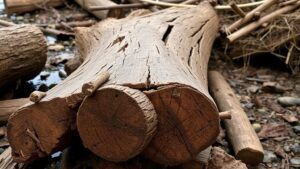Mining Local Historical Archives for Stories of Lost Relics and Treasures
Mining Local Historical Archives for Stories of Lost Relics and Treasures
The quest for lost relics and treasures has captivated historians, archaeologists, and treasure hunters alike. Local historical archives serve as vital repositories of information that can reveal stories of past societies and their material culture. This article explores the significance of these archives, examines successful case studies of treasure recovery, and discusses methodologies for mining this rich historical data.
The Importance of Local Historical Archives
Local historical archives contain a wealth of knowledge about regional history, offering insights into lost relics and treasures. e archives often house a variety of documents, including:
- Historical maps
- Property records
- Correspondence
- Newspapers
- Diaries and personal narratives
The significance of these records lies in their ability to connect the dots between past and present. For example, the archives in historic towns often illuminate former trade routes, settlement patterns, and locations of buried treasures, such as gold and silver coins from colonial times.
Case Studies: Recovering Lost Treasures
There are numerous examples of successful treasure recovery efforts that began with diligent archival research. One notable case is the recovery of 33,000 British coins, known as the Folkestone Hoard, discovered in 2014. Prior archival research unveiled Roman trade routes that indicated potential locations for hidden treasures. The excavation took place in Folkestone, Kent, and yielded a collection valued at approximately £1 million.
Methodologies for Mining Local Archives
Mining historical archives for treasures involves systematic methodologies, including:
- Document Analysis: This entails reviewing historical documents to understand the context of lost relics. For example, property deeds can reveal locations where valuables may have been hidden.
- Spatial Analysis: Utilizing historical maps in combination with modern Geographic Information Systems (GIS) can help identify potential treasure locations overlooked by earlier treasure hunters.
- Community Engagement: Collaborating with local historians and the community can provide first-hand accounts and anecdotal evidence that archivists might not capture.
These methodologies allow researchers to build comprehensive narratives surrounding lost relics, leading to more informed excavations.
Challenges and Limitations
While the potential for discovering lost treasures is immense, several challenges and limitations may hinder researchers:
- Incomplete Records: Many local archives may not have comprehensive records, which can lead to gaps in data.
- Bias in Documentation: Historical records may reflect the biases of their time, affecting the accuracy of the information provided.
- Environmental Changes: Landscapes have evolved, and locations documented may no longer exist as described.
Researchers must critically assess the reliability of the documents and complement archival research with archaeological methods to ensure well-rounded conclusions.
Real-World Applications
The integration of archival research into treasure recovery has practical applications beyond academic interest. Local communities benefit economically and socially from successful treasure discoveries. Communities in California have historically seen boosts in tourism from events centered around the Gold Rush, which were amplified by archival findings that guide treasure hunts. Also, these findings contribute to cultural heritage preservation and education, fostering a deeper appreciation for local history.
Conclusion
In summary, mining local historical archives is an invaluable strategy for uncovering stories of lost relics and treasures. interplay between documented histories and archaeological practices offers a multifaceted approach to understanding our past. By employing systematic methodologies and addressing inherent challenges, scholars can not only enhance knowledge of historical artifacts but also promote engagement with local heritage.
Future research should continue to harness modern technology alongside traditional methods to navigate the complex narratives of our shared history, ensuring that lost stories are not left untold.



